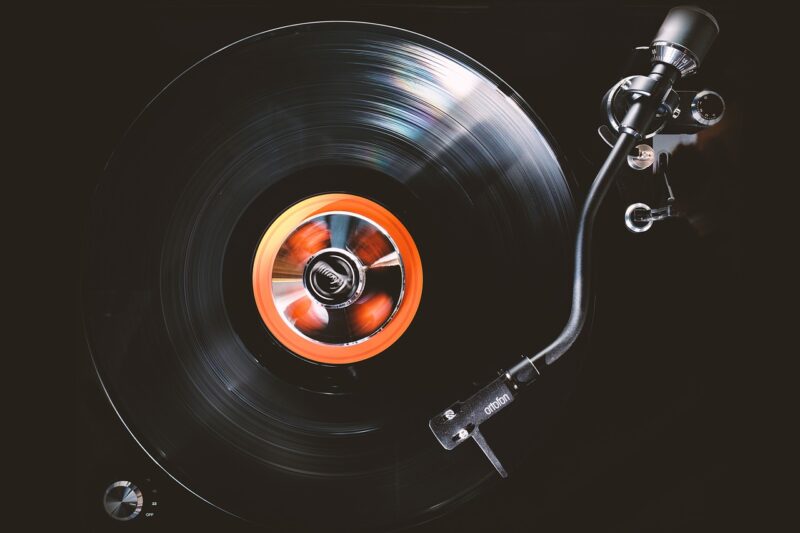
Music has been an integral part of human culture for thousands of years. Its evolution reflects not only technological advancements but also changing societal values and listening habits. This article explores the fascinating journey of music from the classic era of vinyl records to today’s digital streaming services, highlighting the key milestones that shaped the way we consume music.
1. The Birth of Recorded Music
The journey of music evolution can be traced back to the late 19th century with the advent of recorded music. The first known form of recorded music appeared in 1877 when Thomas Edison invented the phonograph. This groundbreaking device allowed sound to be recorded on a cylinder, marking the transition from live music to recorded audio.
Early recorded music consisted primarily of classical tunes and traditional folk songs. These recordings were limited in quality, but they opened the doors for music consumption to a broader audience who could enjoy performances from the comfort of their homes.
2. The Era of Vinyl: A Cultural Revolution
By the 1930s, vinyl records became the standard format for music. The 33 1/3 RPM long-playing album (LP) and the 45 RPM single revolutionized music consumption, allowing for longer playback times and better sound quality. The physicality of vinyl records was a cultural phenomenon; album artwork became a powerful medium for artistic expression and marketing.
Vinyl records became a staple in households worldwide, serving as the primary means of enjoying music through the 50s, 60s, and 70s. Iconic bands like The Beatles and Led Zeppelin included detailed cover art and lyrics, making the ownership of vinyl records a more immersive experience.
3. The Advent of Cassette Tapes and CDs
From the 1970s through the 1980s, music formats diversified further with the introduction of cassette tapes and compact discs (CDs). Cassette tapes not only provided a portable music option but also fueled the mixtape culture, enabling fans to compile their favorite tracks. The affordability and convenience of cassette tapes made them a favorite among music lovers.
The 1980s marked the rise of CDs, which offered several advantages: improved sound quality, durability, and the ability to skip tracks. CDs became the dominant format in the 90s, with labels investing heavily in the production of music albums in this format, leading to record-breaking sales. Album collections transformed from crates of vinyl to sleek CD towers in homes around the world.
4. The Digital Revolution
The late 1990s and early 2000s heralded the digital revolution, revamped how people accessed and consumed music. With the rise of the internet, music began to evolve into a digital format. The introduction of MP3 files allowed for compression without a noticeable loss in quality, enabling entire music libraries to fit on portable devices.
File-sharing services like Napster emerged, radically changing the music landscape by allowing users to download music for free, although this often led to legal controversies and disputes with music labels. As a result, the music industry began to re-evaluate its distribution model and adapt to this new digital environment.
5. The Rise of Digital Downloads
In response to the growing demand for digital music, Apple launched the iTunes Store in 2003, which allowed users to purchase and download individual songs. This model shifted the focus back to artists while providing a legal channel for consumers to enjoy music. Soon, other platforms, such as Amazon Music, followed suit, leveraging digital downloads to maximize convenience for consumers.
Digital downloads also changed the way albums were consumed, with listeners often opting to purchase single tracks instead of entire albums. This led artists to rethink their album structures and marketing strategies.
6. Streaming: The Present and Future of Music Consumption
Streaming services have redefined music consumption over the last decade. Platforms like Spotify, Apple Music, and Tidal have emerged as the dominant force in music distribution, allowing users to access vast catalogs of music for a monthly subscription fee. The benefits of streaming include the convenience of curated playlists, around-the-clock access to extensive libraries, and reduced risks of piracy.
Streaming playlists have also reshaped how artists release music, emphasizing singles over traditional albums. The data-driven nature of these platforms allows artists to gain insights on listener habits and preferences, leading to more focused marketing approaches.
However, the success of these platforms has raised questions about fair compensation for artists. Many musicians are advocating for a more equitable distribution model, stressing the need for better payment structures within streaming services.
7. The Impact of Technology on Music Creation
The evolution of technology not only revolutionized how we consume music but also how it is created. Access to affordable music production software and equipment has democratized music creation, allowing aspiring artists to produce high-quality tracks from home. This shift has led to the rise of independent musicians producing music on their terms, leading to diversity in music styles and genres.
Social media platforms, particularly TikTok, have further transformed how music is marketed and popularized. Viral trends can propel a song to stardom overnight, showcasing the deep relationship between music, technology, and culture in the digital age.
Conclusion: The Future of Music Evolution
As we look to the future, the evolution of music continues to be shaped by technological advancements and shifting listener preferences. While streaming dominates the current landscape, music enthusiasts may see a resurgence of vinyl and physical formats in addition to modern digital trends, as listeners seek authenticity and tangible connections to their favorite artists.
The ever-changing dynamics of the music industry ensure that we remain on the brink of innovation. By embracing the past while exploring new avenues for music creation and consumption, the future of music promises to be as rich and diverse as its history.





